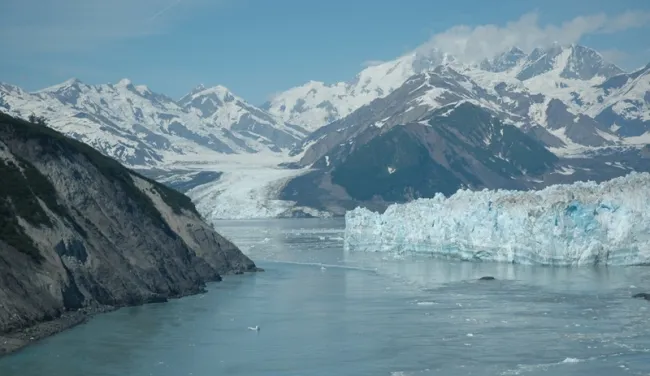
Wrangell-St. Elias National Park and Preserve, located in southeastern Alaska, is the largest national park in the United States, covering an astonishing 13.2 million acres. This vast wilderness is home to towering mountain ranges, glaciers, volcanoes, and diverse wildlife, offering a true sense of remote and untouched beauty. For adventurers and nature lovers, Wrangell-St. Elias is a haven, providing a unique and raw Alaskan experience.
History of the Park
Wrangell-St. Elias National Park was established in 1980 under the Alaska National Interest Lands Conservation Act (ANILCA), along with several other national parks in the state. The park is named after the Wrangell and St. Elias mountain ranges that dominate the landscape. Historically, the area was home to indigenous peoples, particularly the Ahtna and Tlingit, who thrived in this harsh environment for thousands of years. The park also played a role in Alaska's mining history, particularly during the early 20th century copper boom.
Main Features
The park is known for its massive peaks, including nine of the 16 highest mountains in the United States, such as Mount St. Elias, which stands at 18,008 feet. The park is also home to some of the largest glaciers in North America, including the Malaspina Glacier, which is larger than the state of Rhode Island.
Visitors can explore historic sites like the Kennecott Mines National Historic Landmark, an abandoned copper mining town that offers a glimpse into Alaska's industrial past. The Nabesna and McCarthy Roads provide access to the park, each offering scenic drives through remote landscapes.
Types of Trails
Wrangell-St. Elias is a hiker’s paradise, with a variety of trails ranging from short walks to multi-day backcountry treks. The Root Glacier Trail near Kennecott is one of the more accessible hikes, offering a chance to walk on a glacier. For those seeking a more challenging experience, the Skookum Volcano Trail provides a strenuous hike with views of volcanic craters and alpine terrain. Many of the trails are unmarked, requiring visitors to navigate through raw wilderness, making this park ideal for experienced hikers and adventurers.
Crowd Expectations and Annual Visitors
Wrangell-St. Elias is one of the least visited national parks in the U.S., with around 50,000 annual visitors. Its remote location and rugged nature mean that crowds are rare, allowing for a more solitary and immersive experience in the wilderness. Visitors should be prepared for limited services and a self-reliant adventure.
Accessibility for Seniors
While Wrangell-St. Elias caters primarily to backcountry enthusiasts, seniors can still enjoy the park through scenic drives along the Nabesna and McCarthy Roads, which offer breathtaking views without requiring strenuous physical activity. The Kennecott Mill Town also provides an accessible experience, with tours available that allow visitors to explore the historic buildings.
Accessibility for Wheelchairs
Accessibility in Wrangell-St. Elias is limited due to the park's remote and rugged nature. However, some areas, such as the visitor centers at Slana, Chitina, and the Wrangell-St. Elias Visitor Center near Copper Center, are wheelchair accessible. The scenic drives mentioned earlier can also be enjoyed by those with mobility challenges.
Park Amenities
The park's amenities are minimal, with a few visitor centers and ranger stations providing basic services. The Wrangell-St. Elias Visitor Center, located near Copper Center, offers exhibits, information, and ranger-led programs. Restrooms are available at visitor centers, but facilities within the park are sparse, so visitors should come prepared.
Camping Facilities
Camping in Wrangell-St. Elias is a true wilderness experience. There are no developed campgrounds within the park, but primitive camping is allowed. Visitors can set up camp in designated backcountry areas or along roads, offering a chance to experience the park's vastness under the stars. Campers should be well-prepared for unpredictable weather and bear safety.
Access to Lodging
Lodging options are limited within the park. Some accommodations are available in private lodges near the McCarthy and Kennicott areas, as well as in nearby communities like Glennallen. These lodges offer a range of services, from rustic cabins to more comfortable stays with meals and guided tours. Booking in advance is recommended due to the limited availability.
Pet-Friendliness
Wrangell-St. Elias National Park is pet-friendly, but pets must be kept on a leash at all times. Due to the park's wildlife, including bears and wolves, and the remote nature of the environment, pet owners should exercise caution and be prepared for the challenges of bringing a pet into the wilderness. Pets are allowed on trails and in campgrounds, but not in buildings or visitor centers.
Best Months to Visit
The best time to visit Wrangell-St. Elias is during the summer months, from June to August, when the weather is more favorable, and the days are long. During this period, temperatures range from 50°F to 70°F, making outdoor activities more comfortable. Fall can also be a beautiful time to visit, with vibrant colors and fewer visitors, but colder temperatures should be expected.
Conclusion
Wrangell-St. Elias National Park and Preserve offers an unparalleled wilderness experience for those seeking adventure and solitude in one of the most remote and pristine environments in the United States. While the park's rugged nature may deter some visitors, those who make the journey are rewarded with breathtaking landscapes, towering peaks, and a sense of connection to Alaska’s raw and untamed beauty. Whether you're hiking across glaciers, exploring historic mining towns, or simply soaking in the vastness of the wilderness, Wrangell-St. Elias provides a unique and unforgettable experience.



